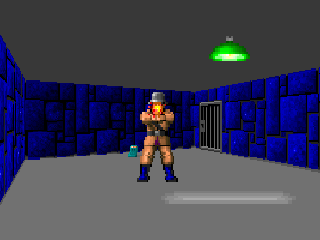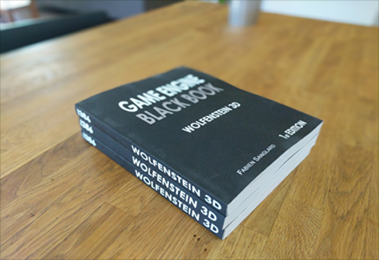Feed digilinux.ru [copy] http://digilinux.ru/feed/ has loading error: cURL error 22: The requested URL returned error: 403 Forbidden
Feed freepost [copy] https://freepo.st/rss/new has loading error: cURL error 22: The requested URL returned error: 500
2017-08-30
suckless.org now supports TLS using Let's Encrypt. Cloning git repos over HTTPS now works. Some links on the page have been changed to allow both HTTP and HTTPS.
HSTS is not fully working yet. This will be fixed.
The IPv6 AAAA record was added and IPv6 is fully working now.
suckless has many subdomains, these should hopefully all work via TLS. If you see a subdomain without a signed certificate please report it. If you find any broken links on the wiki pages, these can be fixed by anyone.
FizzleFade

I enjoy reading a lot of source code and after 15 years in the field I feel like I have seen my fair share. Even with a full-time job, I still try to spare evenings here and there to read. I don't see myself every stopping. It is always an opportunity to learn new things to follow somebody's mind process.
Every once in a while I come across a solution to a problem that is so elegant, and so creative that there is no other word but "beautiful" to describe it. Q_rsqrt, better knows as "Inverse Square Root" and popularized...
When not to use a regex
The other day, I saw Learn regex the easy way. This is a great resource, but I felt the need to pen a post explaining that regexes are usually not the right approach.
Let’s do a little exercise. I googled “URL regex” and here’s the first Stack Overflow result:
https?:\/\/(www\.)?[-a-zA-Z0-9@:%._\+~#=]{2,256}\.[a-z]{2,6}\b([-a-zA-Z0-9@:%_\+.~#?&//=]*)
source
This is a bad regex. Here are some valid URLs that this regex fails to match:
http://x.org http://nic.science http://名がドメイン.com (warning: this is a parked domain) http://example.org/url,with,commas https://en.wikipedia.org/wiki/Harry_Potter_(film_series) http://127.0.0.1 http://[::1] (ipv6 loopback)Here are some invalid URLs the regex is fine with:
http://exam..ple.org http://--example.orgThis answer has been revised 9 times on Stack Overflow, and this is the best they could come up with. Go back and read the...
State of Sway August 2017

Is it already time to write another one of these? Phew, time flies. Sway marches ever forward. Sway 0.14.0 was recently released, adding much asked-after support for tray icons and fixing some long-standing bugs. As usual, we already have some exciting features slated for 0.15.0 as well, notably some cool improvements to clipboard support. Look forward to it!
Today Sway has 24,123 lines of C (and 4,489 lines of header files) written by 94 authors across 2,345 commits. These were written through 689 pull requests and 624 issues. Sway packages are available today in the repos of almost every Linux distribution.
For those who are new to the project,...
Game Engine Black Book ReleaseDate

How was Wolfenstein 3D made and what were the secrets of its speed? How did id Software manage to turn a machine designed to display static images for word processing and spreadsheet applications into the best gaming platform in the world, capable of running games at seventy frames per seconds? If you have ever asked yourself these questions, Game Engine Black Book is for you.
This is an engineering book. You will not find much prose in it (the author’s English is broken anyway.) Instead, this book has only bit of text and plenty of drawings attempting to describe in...
OpenMoko: 10 Years After (Mickey’s Story)
For the 10th anniversary since the legendary OpenMoko announcement at the „Open Source in Mobile“ (7th of November 2006 in Amsterdam), I’ve been meaning to write an anthology or – as Paul Fertser suggested on #openmoko-cdevel – an obituary. I’ve been thinking about objectively describing the motivation, the momentum, how it all began and – sadly – ended. I did even plan to include interviews with Sean, Harald, Werner, and some of the other veterans. But as with oh so many projects of (too) wide scope this would probably never be completed. As November 2016 passed without any progress, I...
2017-07-03
The suckless.org project is now hosted on a new server. All inactive accounts have been removed during the relocation.
Please note that the new ECDSA key fingerprint is SHA256:7DBXcYScmsxbv7rMJUJoJsY5peOrngD4QagiXX6MiQU.
Archive it or you will miss it
Let’s open with some quotes from the Wikipedia article on link rot:
In 2014, bookmarking site Pinboard’s owner Maciej Cegłowski reported a “pretty steady rate” of 5% link rot per year… approximately 50% of the URLs in U.S. Supreme Court opinions no longer link to the original information… (analysis of) more than 180,000 links from references in… three major open access publishers… found that overall 24.5% of links cited were no longer available.
I hate link rot. It’s been common when servers disappeared or domains expired, in the past and still today. Today, link rot is on the rise under the influence of more sinister factors. Abuse of DMCA. Region...